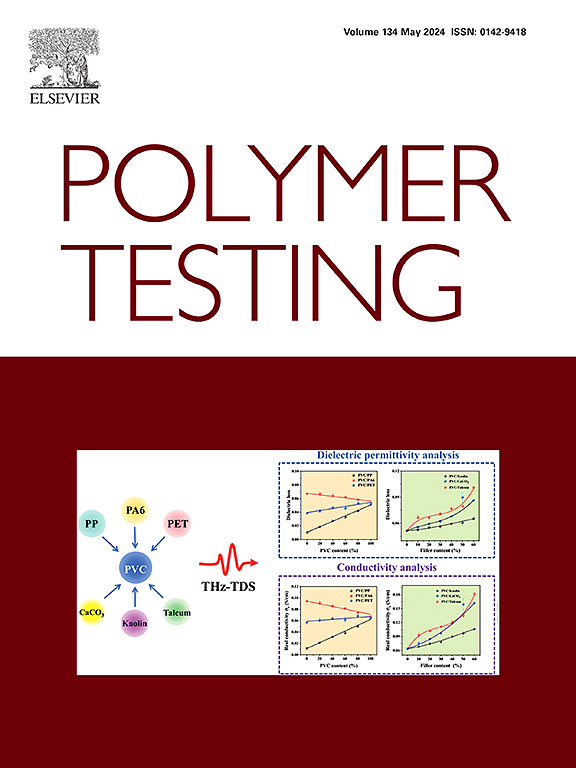Unlocking innovation: Novel films synthesised and structurally analysed from poly (l-lactide-co-ethylene adipate) block copolymers blended with poly(lactic acid)
IF 5
2区 材料科学
Q1 MATERIALS SCIENCE, CHARACTERIZATION & TESTING
引用次数: 0
Abstract
This study addresses the inherent shortcomings of poly (lactic acid) (PLA), a biodegradable polymer widely used in industries such as packaging and biomedical applications. The principal challenge of PLA resides in its low crystallinity, which detrimentally affects its mechanical properties and thermal stability. Additionally, PLA is prone to water and hydrolysis, which compromises its chemical resistance and can lead to degradation over time. To overcome surmount these limitations, the study focuses on the development of hybrid films through the blending of PLA with poly (l-lactide-co-ethylene adipate) (pLEA) block copolymers. The objective is to augment the crystallinity, mechanical performance, and chemical resistance of the resulting materials. The study employs a range of analytical techniques, including Nuclear Magnetic Resonance (NMR), Fourier Transform Infrared Spectroscopy (FTIR), X-ray Diffraction (XRD), Polarised Light Microscopy (PLM), Differential Scanning Calorimetry (DSC), and Thermogravimetric Analysis (TGA), to thoroughly characterize the copolymers and blend films. By systematically selecting blending ratios and processing methodologies, the study demonstrates enhancements in the properties of the resultant hybrid films compared to neat PLA. Specifically, the structure of films significantly changed from amorphous to crystalline in a short duration - 5 min, of annealing. , leading to better tensile strength, modulus and reduced wettability, which are crucial for applications requiring durability and resistance to environmental factors. Films made from 30 wt% of pLEA 97.5/2.5 with 70 % of PLA by fast cooling exhibited outstanding mechanical properties, with a tensile strength 20 MPa higher than that of neat PLA films. Additionally, the chemical resistance may be improved, as evidenced by a decrease in wettability by approximately 15° and a reduction in the polar component of the surface free energy by about 7 mN/m. Hydrophobic, water-repellent materials resist penetration by water and other polar solvents, reducing exposure to corrosive substances and enhancing chemical resistance through barrier protection. Overall, this research addresses the limitations of PLA through innovative copolymerization and blending strategies, offering valuable insights into optimizing the material's properties for various practical applications.

求助全文
约1分钟内获得全文
求助全文
来源期刊

Polymer Testing
工程技术-材料科学:表征与测试
CiteScore
10.70
自引率
5.90%
发文量
328
审稿时长
44 days
期刊介绍:
Polymer Testing focuses on the testing, analysis and characterization of polymer materials, including both synthetic and natural or biobased polymers. Novel testing methods and the testing of novel polymeric materials in bulk, solution and dispersion is covered. In addition, we welcome the submission of the testing of polymeric materials for a wide range of applications and industrial products as well as nanoscale characterization.
The scope includes but is not limited to the following main topics:
Novel testing methods and Chemical analysis
• mechanical, thermal, electrical, chemical, imaging, spectroscopy, scattering and rheology
Physical properties and behaviour of novel polymer systems
• nanoscale properties, morphology, transport properties
Degradation and recycling of polymeric materials when combined with novel testing or characterization methods
• degradation, biodegradation, ageing and fire retardancy
Modelling and Simulation work will be only considered when it is linked to new or previously published experimental results.
 求助内容:
求助内容: 应助结果提醒方式:
应助结果提醒方式:


